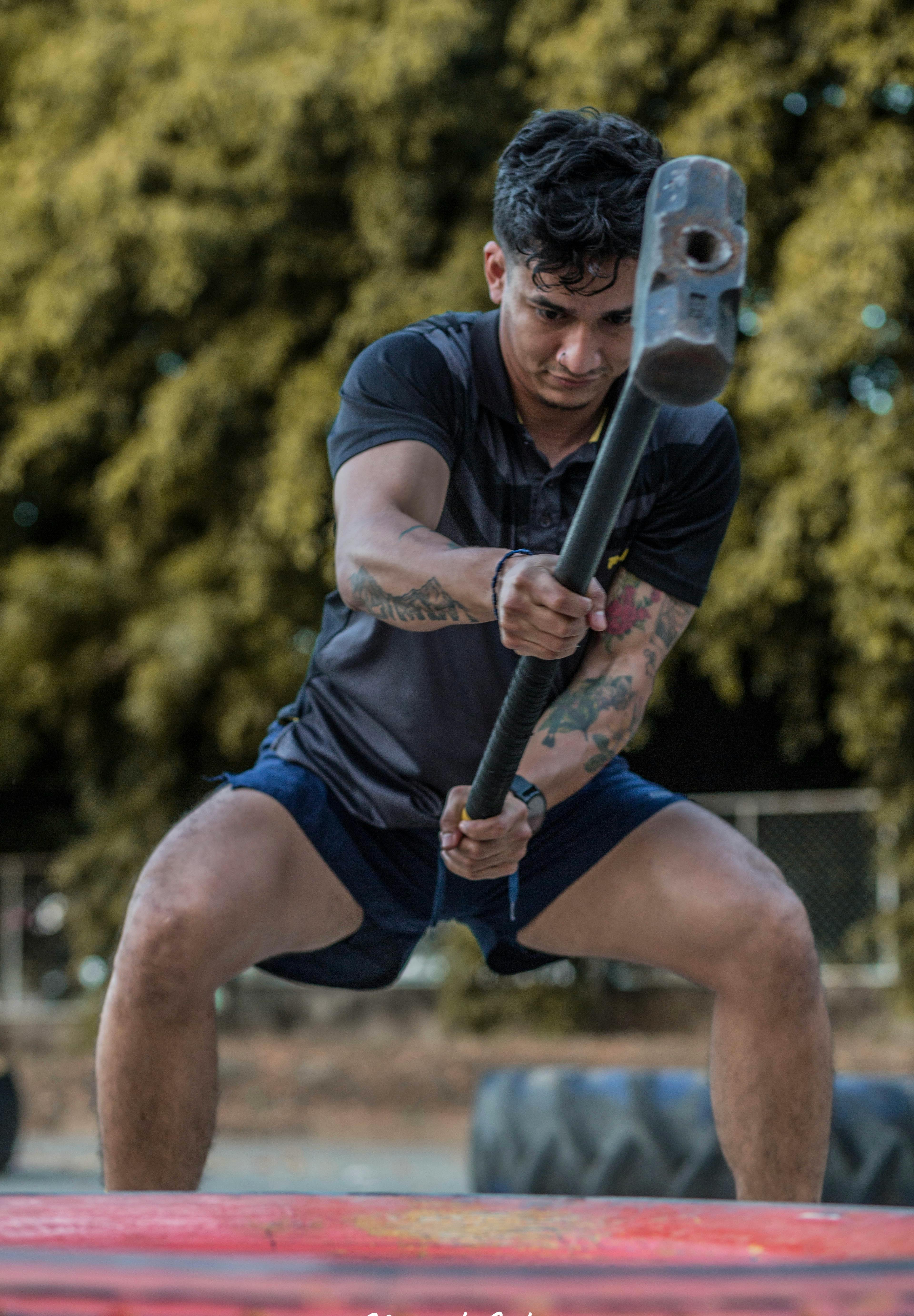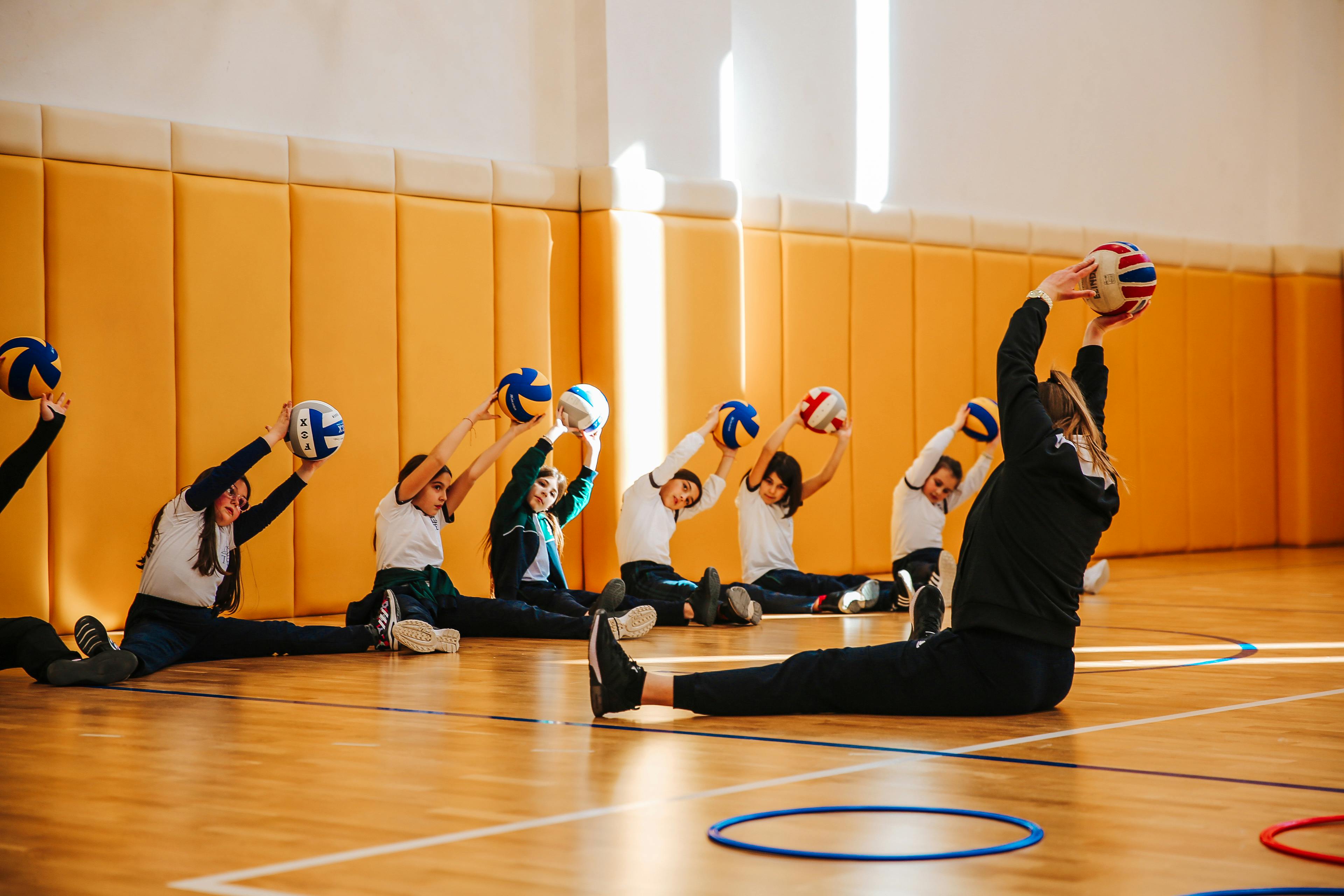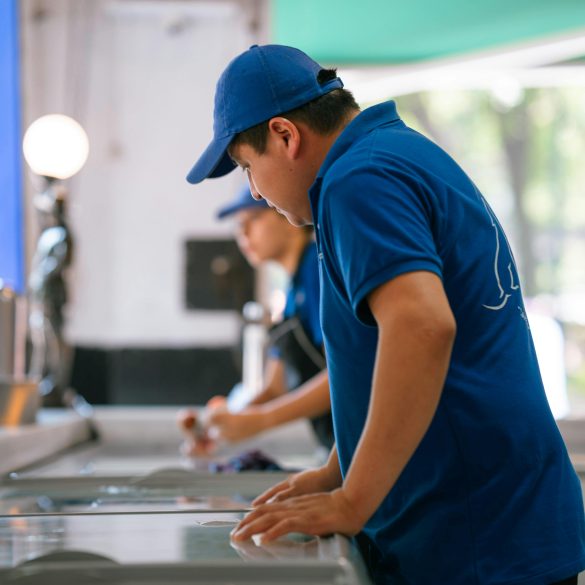Nicaragua Youth Sports: 7 Simple Habits Proven to Boost Performance
Let’s get real for a second—every young athlete in Nicaragua faces a completely unique mix of pressure, expectation, and possibility. Some train on dusty fields, others dream big under relentless sun, and too many give up before they see real progress. I remember, not so long ago, volunteering at a rural youth football clinic outside Granada. The sheer determination I saw in those kids, running drills barefoot but grinning ear to ear—absolutely infectious. Yet here’s the sobering reality: talent alone isn’t enough. Consistent, daily habits—and I mean the kind anyone can implement, no matter what gear or resources you have—are the true engine behind actual performance breakthroughs.1
What I’d like to do here is dig into seven evidence-based, practical routines that Nicaraguan youth can rely on—not some out-of-reach pro-athlete program, but simple, actionable habits that are proven to build performance, mental resilience, and lifelong athleticism. This comes from a mix of what I’ve seen on the field, fresh research, conversations with local coaches, and honestly, quite a few moments of my own learning (including flat-out mistakes I wish someone had pointed out to me earlier). We’ll get tactical, we’ll keep it relevant, and I promise—zero fluff, just genuinely actionable steps that work in Nicaragua’s real-world context.
Why Daily Habits Matter for Young Athletes in Nicaragua
I used to think athletic “talent” was something you either had, or you didn’t. Turns out, I couldn’t have been more off base. Over the last decade, study after study has confirmed that it’s daily routines—the invisible, almost boring stuff kids do outside the spotlight—that produce lasting gains and protect from setbacks.2 This holds doubly true in Nicaragua, where access to top-tier facilities or private coaching is limited for most. Quick reality check: Nicaraguan athletes often face unpredictable schedules, stifling heat, and limited access to specialized sports science support. Yet, those who make progress? They’re the ones who master what’s controllable—fuel, hydration, recovery, and mindset.
So if you’ve ever wondered why some kids bounce back from setbacks, seem to get better week after week, or rarely struggle with injuries, here’s the spoiler: it’s almost always habit-driven adaptation, not a stroke of luck. Makes you think, right?
The 7 Proven Habits: Overview
رؤية شخصية
Whenever I analyze high-performing youth groups (rugby, baseball, track, you name it), the kids who leap ahead aren’t just putting in more hours—they’re nailing the same 7 building-block routines. Simple, repeatable, stubbornly consistent. These principles are echoed by both local Nicaraguan coaches and the latest research from the American College of Sports Medicine.3 And here’s the beauty: none rely on fancy equipment, all can be adapted for Nicaraguan conditions, and every one builds skills for sport و for life.
- 1. Daily Nutrition & Smart Fueling
- 2. Hydration is Non-Negotiable
- 3. Sleep Routines for Recovery
- 4. Structured Warm-Ups & Cool-Downs
- 5. Mental Preparation & Goal-Setting
- 6. Stretching & Mobility Drills
- 7. Building a Supportive Community
Key Point: Consistency Beats Perfection
Speaking frankly, I’ve seen kids turn careers around not because they were perfect, but because they stuck with small daily habits longer than anyone else. That’s the real competitive edge—especially in Nicaragua.
Habit #1: Daily Nutrition & Smart Fueling
Let me be blunt here: most performance “plateaus” I witness among Nicaraguan youth? They come down to poor nutrition—whether it’s not eating enough, skipping breakfast, or fueling up on quick, processed snacks. Parents and coaches often underestimate this. The science, however, is emphatic: proper fueling directly impacts energy, focus, recovery, and even injury rates.5
What’s tricky is that kids hear so many myths on social media or from peers (“carbs are bad”, “you need supplements”). Actually, let me clarify that. The real trick is helping young athletes (and families) make balanced food choices with what’s available. Beans, rice, plantains, fruit, eggs, dairy, and local proteins—these humble staples are powerful fuel when used right.
Quick Wins for Everyday Nutrition
- Consistent breakfast: aims for a mix of carbs, protein (eggs or beans), and fruit.
- Snack smart: fruits (bananas, papaya), nuts, plain yogurt over processed foods.
- Home-cooked meals: prioritize traditional Nicaraguan foods over imported, heavily packaged options.
- Post-practice meal: include protein (chicken, fish), veggies, and healthy carbs to speed recovery.6
لحظة التعلم الشخصية
I can’t tell you how many times I’ve seen a young athlete perform far below their potential in afternoon games simply because they skipped their mid-day meal. Simple, right? Yet most families still undervalue this step—until they see the turnaround after a month of eating better.
Habit #2: Hydration is Non-Negotiable
Now, before you eye-roll and move on, bear with me—hydration is ال performance equalizer, especially under Nicaragua’s merciless sun. According to multiple studies, youth athletes commonly start practices already mildly dehydrated, which instantly zaps speed, focus, and stamina.7 Back when I used to coach in León, we implemented regular water breaks—no fancy sports drinks needed, just clean, cool water. The result? Fewer cramps, better performance, and happier kids. Sometimes the simplest “hacks” make the greatest difference.
| Recommended Water Intake (Ages 10-18) | Average Practice Days | Key Warning Signs |
|---|---|---|
| 1.5–2 liters/day | 3–5 | Dry mouth, low energy, headaches |
Encourage carrying refillable bottles—and, critically, make drinking water a social norm, not a “bonus.” Kids model coach behavior, so I always make a point to hydrate publicly myself. Small behavioral cues matter.
Habit #3: Sleep Routines for Recovery
Honestly? Sleep is the unsung hero of youth development, and it’s so often neglected. I remember nights before big away tournaments where kids (and, okay, some coaches) stayed up late, nerves jangling, Netflix binging. The next morning, performance tanked—no matter how much raw talent was there. You’ve probably seen the same. Research out of the University of Pittsburgh confirms, repeatedly: athletes under 17 who average less than seven hours’ sleep are twice as likely to get injured and recover far more slowly from physical or emotional setbacks.8
- Set “lights-out” by 9:30pm for 12–16-year-olds during the season
- Discourage late-night screens/gaming; use bedtime routines (reading, mellow music)
- Prioritize 8–10 hours/night—yes, really. Not optional for growth, memory, and injury prevention
Quick Reset: Coach’s Tip
If you sense the team dragging after a few rough nights, prioritize a team “rest day” or lead a group nap between events. It feels odd at first, but I swear it’s a total game-changer.
Habit #4: Structured Warm-Ups & Cool-Downs
Warming up isn’t just about tradition—it’s about priming the nervous system, reducing injury risk, and mentally “switching on.” Too often, I see warm-up skipped or done as an afterthought, especially at “friendly” weekend games in Managua playgrounds. The most consistent, injury-proofed teams? They treat warm-up as non-negotiable—a chance to build chemistry, focus, and safe range of movement.9
- Dynamic movements (jogging, skipping, “high knees”)
- Muscle activation drills (squats, lunges, arm swings)
- Sport-specific drills (ball work, shuttle runs, hand-eye)
- Gentle stretching (always after, not before, main activity)
Cooldowns are just as vital—light jogging, stretching, and deep breathing help the body process lactic acid and the brain re-center post-competition. One coach I mentored (shout-out to Coach Edwin in Masaya!) now closes every practice with 3 minutes of team breathing and gratitude—lowering team anxiety and injury recurrence. I was skeptical at first, but the shift was immediate.

Habit #5: Mental Preparation & Goal-Setting
Let’s be honest—mental game is the single biggest difference-maker I’ve seen among young Nicaraguan athletes, especially those stepping up to regional tournaments.11 Back when I first started supporting youth futsal clinics in Bluefields, motivation would spike during the first week, then quickly fade unless we built structured, visible goals right into daily practice. That “big game” nerves? Real, and often overwhelming.
- Set 1-2 concrete, achievable goals each week (e.g. “5 more passes completed”, “10 minutes faster mile pace”)
- Deliver regular, specific feedback—not generic praise, but real achievements (“Nice recovery on defense,” not just “good job”)
- Practice brief “visualization”: picture the perfect play, or a moment of resilience after a tough mistake
- Debrief openly after matches—what worked, what needs work—with an emphasis on learning, not blaming
التأمل الشخصي
I used to gloss over mental prep, until a counselor friend pointed out that self-doubt often spikes in adolescence, especially when there’s pressure to “play for the barrio.” Now, I make mental drills as central as sprints or skillwork.
Habit #6: Stretching & Mobility Drills
Here’s the thing—if there’s one area I’m still learning about, it’s how best to implement mobility routines with limited equipment. Over time, though, I’ve seen that the teams with the fewest muscle injuries, especially after growth spurts, are the ones that treat stretching as a daily, لا occasional, practice.12 The challenge in Nicaragua? Young athletes sometimes see stretching as “punishment” after long, grueling practices. That mindshift—from chore to self-care—makes all the difference.
Key Movements for All Ages
- Dynamic stretches: before activity (arm circles, hip openers)
- Static holds: after practice (hamstring stretches, quad pulls, calf holds)
- Mobility games: animal walks, bear crawls, frog jumps—keeps sessions fun for younger athletes
I’ll be honest, stretching is one area Nicaraguan families and coaches sometimes skip when time is short. But—here’s my evolving perspective—it’s precisely on “busy” days that five extra minutes can help prevent weeks on the sideline.
Habit #7: Building a Supportive Community
Performance isn’t just what you do alone. Consistent winners are surrounded by a web of support—coaches, family, teammates, and neighbors—cheering, challenging, and sometimes picking up the slack on the roughest days. This is true everywhere, but especially in Nicaragua, where community is woven into everyday life. Unfortunately, I’ve seen very real cases of isolation limiting athlete growth, especially for girls or in rural programs. Here’s what struck me: when we intentionally fostered group check-ins, social hangouts (even outside sport), and parental involvement, dropout rates fell sharply and performance leapt.
- Create team “accountability pairs” or “buddies” who check in before/after practice
- Host community family days—sports plus cooking or music events
- Recognize peer achievements publicly, not just the “MVPs”
- Encourage community mentors (retired athletes, local teachers) to visit and share stories
Challenge for Parents & Coaches
If you’re overseeing a youth team, designate “team spirit” sessions every fortnight—no drills, just food, storytelling, low-pressure games. It builds trust, improves communication, and actually boosts performance on the field. I’ve lost count of how many tight, last-minute games were won because of unshakable team spirit built off the field.
Making Habits Stick: Practical Implementation
If you’re like me, you’ve probably tried to roll out big habit changes, only to watch enthusiasm fade after a few weeks. The secret? Focus on one small behavior at a time, scaffold new routines, and celebrate micro-wins. Any routine—nutrition, sleep, stretching—is infinitely more likely to become permanent if athletes track their progress and see real, positive changes in how they feel and play.14
- Pick one new habit for 14 days (e.g., “water before breakfast”)
- Use visual trackers: sticker charts, group WhatsApp check-ins, or simple notebooks
- Reward consistency rather than “perfect streaks.” Missing one day isn’t failure—what matters is the restart
- Publicly celebrate team progress at the end of each month
Personal Story
I once tried introducing a “daily breakfast club” at 7am for high schoolers, expecting pushback. To my surprise, student leaders took over meal planning, and parents began swapping healthy recipes. The result? Attendance skyrocketed, and so did energy at afternoon practice. It all started with just one, stubbornly simple habit.
Local Realities: Adapting Habits for Nicaragua
If there’s one thing I want to hammer home, it’s the need for realistic adaptation. Too many routines you see online or in textbooks miss the specifics of Nicaragua’s reality—heat, cost, transportation challenges, gender disparities. For instance, hydration recommendations from major sports bodies sometimes feel disconnected when public water access is limited. Here’s my honest take: it’s less about perfection, more about creative consistency. Substitute coconut water, make do with home-cooked meals, carve out practice spots in unexpected places.15
So, for parents and coaches, here’s what truly matters: start with routines that fit your context. Don’t chase unattainable standards—just make tiny, relentless improvements. The invisible routines, repeated daily in real Nicaraguan neighborhoods, are what foster sustainable success—and lifelong health.16
الأسئلة الشائعة
How quickly will these habits improve performance?
For most young athletes, you’ll see the first noticeable improvements within 2-4 weeks—better energy, fewer injuries, improved mood, sharper focus. But—here’s the thing—long-term transformation takes full seasons and supportive environments. Celebrate progress, not just results.
Do these routines work if my child doesn’t have formal coaching or equipment?
Absolutely. What truly matters: consistency, creativity, and community support. Informal backyard play, bodyweight routines, and basic equipment (homemade cones, reused balls, improvised obstacles) can all deliver performance gains when paired with these habits.
What if my athlete resists new routines?
Every athlete (even pros) resists change at first. Involve them in planning, set micro-goals, track progress visually, and—most importantly—celebrate small wins. Social support and positive peer modeling are your best assets for making new habits stick.
How do we adapt routines for Nicaragua’s climate?
Avoid training at midday (especially April–May), build rest breaks into practice, and always, always prioritize hydration and warm-up adaptations for heat/humidity. If outdoor practice is unworkable, transform patios, porches, or school halls into training spaces whenever possible.
How can we help more girls benefit from these habits?
Support girls’ teams with dedicated time, positive role models, and community encouragement. Make sure girls see themselves in every club’s leadership and celebration. Challenge stereotypes through public recognition of achievements, not just wins.
Your Next Step: Take Action Today
If you take nothing else from this guide, remember this: start with one small habit this week, make it visible, and encourage others to join in. Tomorrow’s Nicaraguan champions are forged not in elite gyms, but in backyards, school fields, and neighborhood teams—one daily routine at a time.
Final Thoughts: Building a Culture of Everyday Athlete Success
Looking back, the biggest lesson I’ve learned across dozens of youth sports journeys in Nicaragua is this: greatness isn’t reserved for a lucky few. It’s built, slowly but surely, in the space between practice sessions—at the breakfast table, in water breaks, in quiet moments before sleep. Those habits form the bedrock of confidence, resilience, and lifelong health. If I could do it all again, I’d spend less time chasing short-term skills and more time building unshakable routines. That’s where the true game-changers live—and that’s absolutely within reach, for every Nicaraguan athlete and family.
مراجع



